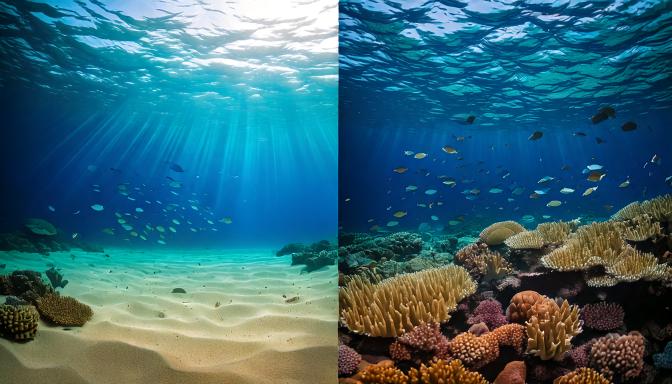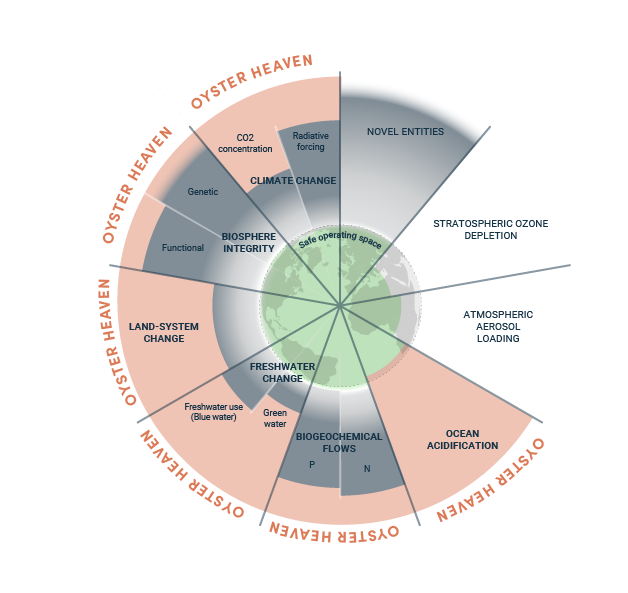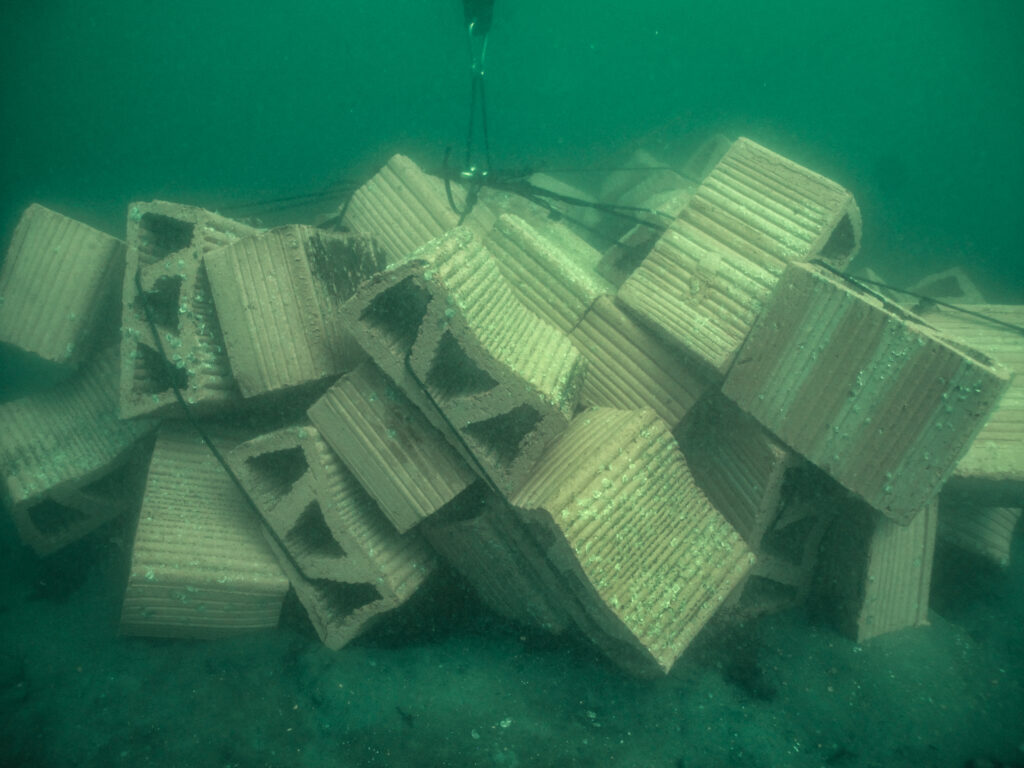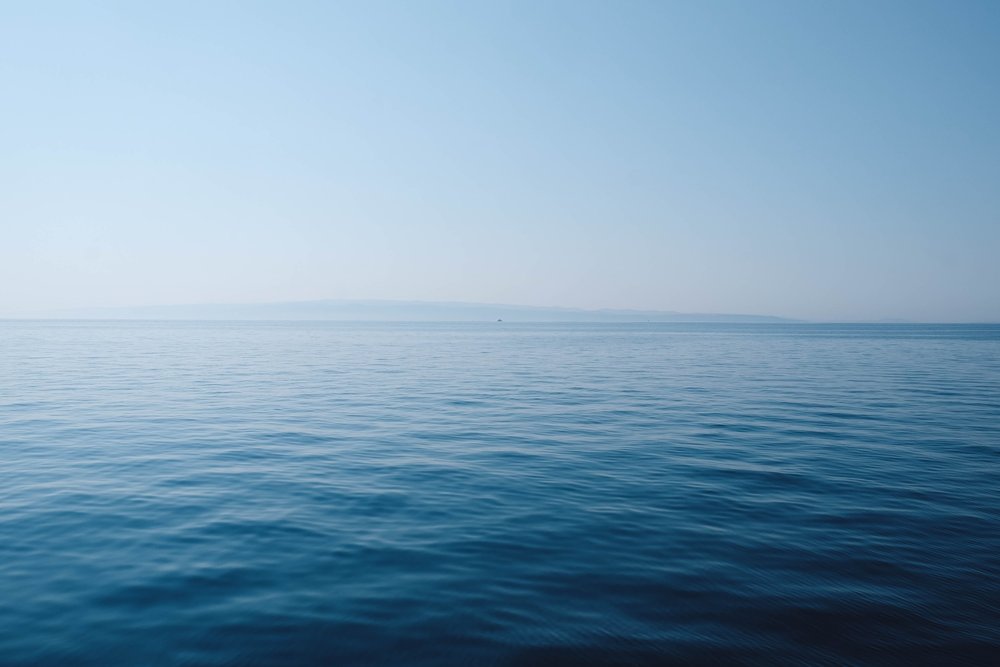
In the face of climate change, biodiversity loss, and the growing threats to our oceans, the concept of rewilding is emerging as an approach to restoring ecosystems to their natural states.

At Oyster Heaven, we believe that rewilding – or seawilding – the ocean through the restoration of oyster reefs is a key solution to help nature heal itself. By strategically restoring oyster reefs in specific locations, these reefs act as marine biodiversity hotspots encouraging species to return and thrive.
The beauty of this approach is that restoring even just 1% of the North Sea can trigger an unstoppable snowball effect enabling natural ecosystems to expand and restore themselves to their original state. 100 million oysters could create the basis for 1 billion oysters.
By focusing on rebuilding these essential habitats, we can support not only marine biodiversity but also address several planetary boundaries that are under threat, as explained in this previous blog.
Oyster reefs are often described as ecosystem engineers because of their ability to generate biodiversity and provide critical ecosystem services that benefit both marine life and coastal communities. They create a complex habitat structure that supports a wide range of marine species, from tiny invertebrates to larger fish and crustaceans, and act as natural water filters, improving water quality by removing excess nutrients and pollutants from the water column.
Living breakwaters are coastal protection structures designed to reduce wave energy and prevent shoreline erosion. Unlike traditional breakwaters, often made from concrete or stone which can be disruptive, and only focus on blocking waves, living breakwaters incorporate natural materials that encourage the growth of organisms like oysters, corals, and seagrasses to form a natural barrier.
These natural structures create a more resilient coastal ecosystem as they grow and expand, they are more durable and effective over time and add ecological value. They also stabilise sediment, filter water, and provide shelter for fish and other marine species. They truly are a win-win solution.
Oysters can also sequester carbon, as they use it to build their shells. This effectively locks away carbon dioxide and helps to stabilise the pH of the surrounding water, mitigating ocean acidification. This process not only supports the health of marine species that rely on stable pH levels but also mitigates one of the key factors driving climate change.
Because globally only 15% of oyster reefs remain, restoring this keystone species is our core goal. However, rewilding the ocean through oyster reef restoration is not just about addressing this single issue; it’s about tackling multiple environmental challenges at once creating a domino effect that positively impacts several planetary boundaries simultaneously.

By enhancing biodiversity, oyster reefs contribute to the resilience of marine ecosystems, making them more adaptable to changes in climate and environmental conditions.
These reefs also play a crucial role in stabilising ocean acidification and regulating biogeochemical flows, such as nitrogen and phosphorus cycles, by reducing excess nutrients that can lead to harmful algal blooms and eutrophication.
Furthermore, oyster reefs help protect coastlines by acting as natural barriers that reduce erosion and buffer the impact of storm surges. This not only safeguards coastal habitats but also provides economic benefits to communities that depend on these areas for tourism, fishing, and other livelihoods.
Restoring oyster reefs is more than a conservation effort; it’s a pathway to a sustainable future where human and ecological health are inextricably linked.
At Oyster Heaven, we are committed to restoring oyster reefs at a large scale and bringing the oceans back to their original state. While some issues like ocean acidification and the changing conditions of the environment are a threat to oyster reefs, these vital ecosystem engineers also hold the key to restoring balance in our oceans. We just need to give them a little helping hand.
To help them thrive in the wild, our method begins with spat settlement in controlled land-based environments where young oysters grow and develop without the immediate threats of predators or fluctuating ocean conditions.


Only when they are strong enough to survive these harsh conditions we deploy them into the sea. This method ensures a higher survival rate, giving the oysters a better chance to survive and contribute to the resilience of their habitats. Once in the sea, they will grow into a habitat full of life generating biodiversity and becoming home to hundreds of other species.
Rewilding the ocean is not a quick fix, but a long-term strategy to help nature return to its original state of balance. Through these efforts, we are reinforcing the ocean’s natural defences and contributing to a more resilient future for our planet.
We can’t wait to see our oysters transform into thriving habitats incredibly full of life, and that vision is coming closer to reality with each passing day.

Make a measurable difference for the ocean today.
You can now adopt a Mother Reef and help restore 100 oysters!

